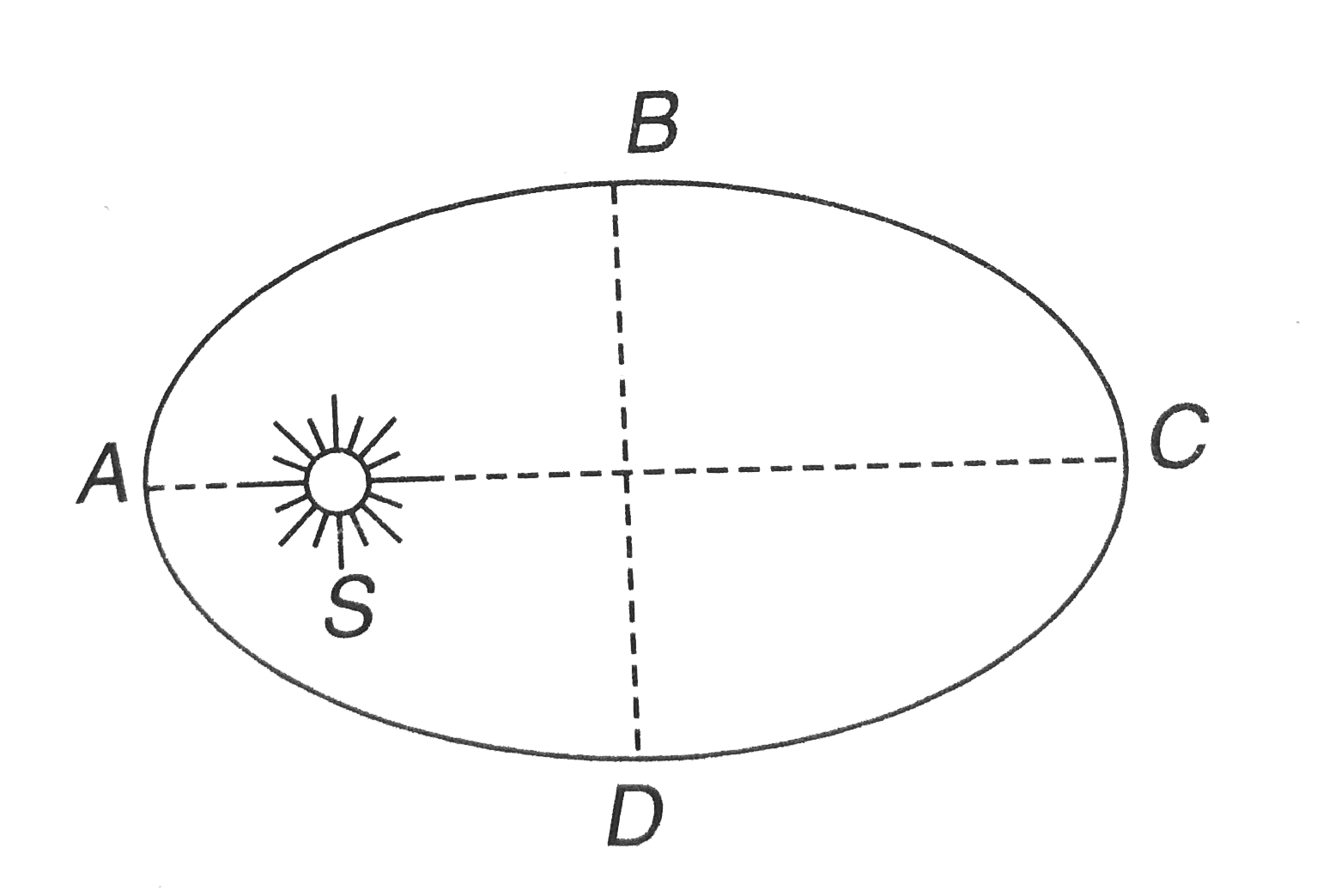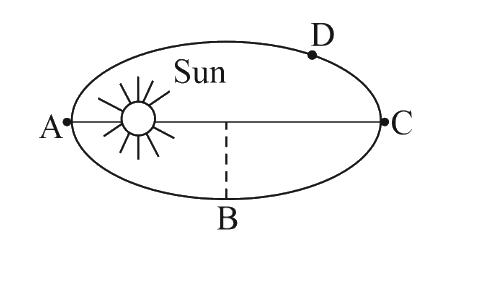A planet is revolving around the Sun in an elliptical orbit. Its closest distance from the sun is rmin. The farthest distance from the sun is rmax if the orbital angular velocity of the planet when it is nearest to the Sun ω then the orbital angular velocity at the point when it is at the farthest distance from the sun is
(√rminrmax)ω
(√rmaxrmin)ω
(rmaxrmin)2ω
(rminrmax)2ω
The correct Answer is:D
To solve the problem, we need to use the principle of conservation of angular momentum. The angular momentum L of a planet revolving around the Sun can be expressed as:
L=m⋅v⋅r
where:
- m is the mass of the planet,
- v is the orbital velocity,
- r is the distance from the Sun.
We can also express the orbital velocity v in terms of the angular velocity ω:
v=r⋅ω
Substituting this into the angular momentum equation gives us:
L=m⋅(r⋅ω)⋅r=m⋅r2⋅ω
Since there is no external torque acting on the planet, the angular momentum is conserved. Therefore, we can say:
m⋅r2min⋅ω=m⋅r2max⋅ω′
where:
- ω is the angular velocity at the closest distance rmin,
- ω′ is the angular velocity at the farthest distance rmax.
Since the mass m is constant, we can cancel it from both sides:
r2min⋅ω=r2max⋅ω′
Now, we can solve for ω′:
ω′=r2minr2max⋅ω
Thus, the orbital angular velocity at the farthest distance from the Sun is:
ω′=r2minr2max⋅ω
Summary of the Solution:
1. Write the expression for angular momentum.
2. Substitute the expression for velocity in terms of angular velocity.
3. Set up the conservation of angular momentum equation.
4. Cancel mass and rearrange to solve for the angular velocity at the farthest distance.
- m is the mass of the planet,
- v is the orbital velocity,
- r is the distance from the Sun.
- ω is the angular velocity at the closest distance rmin,
- ω′ is the angular velocity at the farthest distance rmax.
1. Write the expression for angular momentum.
2. Substitute the expression for velocity in terms of angular velocity.
3. Set up the conservation of angular momentum equation.
4. Cancel mass and rearrange to solve for the angular velocity at the farthest distance.
Topper's Solved these Questions
- GRAVITATIONBOOK - ALLENCHAPTER - GRAVITATIONEXERCISE - Exercise 3 (Miscellaneous Type Questions)
20 Videos
- GRAVITATIONBOOK - ALLENCHAPTER - GRAVITATIONEXERCISE - Exercise 4 A (Conceptual Subjective Exercise)
14 Videos
- GRAVITATIONBOOK - ALLENCHAPTER - GRAVITATIONEXERCISE - Exercise 1 (Check your Grasp)
28 Videos
- GEOMETRICAL OPTICSBOOK - ALLENCHAPTER - GEOMETRICAL OPTICSEXERCISE - subjective
14 Videos
- KINEMATICS-2DBOOK - ALLENCHAPTER - KINEMATICS-2DEXERCISE - Exercise (O-2)
46 Videos
Similar Questions
The earth revolves round the sun in an elliptical orbit. Its speed
View SolutionA planet is revolving around the Sun in an elliptical orbit. Its closest distance from the Sun is r and farthest distance is R. If the orbital velocity of the planet closest to the Sun is v, then what is the velocity at the farthest point?
View Solution
Knowledge Check
A planet is revolving in an elliptical orbit around the sun. Its closest distance from the sun is r and the farthest distance is R. If the velocity of the planet nearest to the sun be v and that farthest away from the sun be V. then v/V is
AR2/r2Br2/R2CR/rDr/R
A planet is moving round the sun in an elliptical orbit as shows. As the planet moves from A to B

View SolutionA planet is revolving around the sun as shown in elliptical path. The correct option is

View SolutionA planet is revolving round the sun in an elliptical orbit as shown in figure. Select correct alternative(s)
View SolutionA planet is revolving round the sun in an elliptical orbit, If v is the velocity of the planet when its position vector from the sun is r, then areal velocity of the planet is
View SolutionA planet revolves around the sun in an elliptical . The linear speed of the planet will be maximum at

View SolutionFor a planet revolving around Sun in an elliptical orbit, to obtain its velocity at any point we have to apply
View SolutionSpeed of a planet in an ellioptical orbit with semimajor axis a about sun of mass M at a distance r from sun is
View Solution
